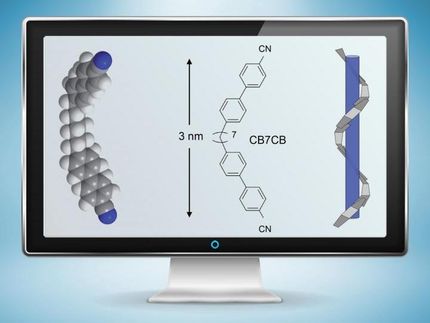Discovery of new transparent thin film material could improve electronics and solar cells
A team of researchers, led by the University of Minnesota, have discovered a new nano-scale thin film material with the highest-ever conductivity in its class. The new material could lead to smaller, faster, and more powerful electronics, as well as more efficient solar cells.
Researchers say that what makes this new material so unique is that it has a high conductivity, which helps electronics conduct more electricity and become more powerful. But the material also has a wide bandgap, which means light can easily pass through the material making it optically transparent. In most cases, materials with wide bandgap, usually have either low conductivity or poor transparency.
"The high conductivity and wide bandgap make this an ideal material for making optically transparent conducting films which could be used in a wide variety of electronic devices, including high power electronics, electronic displays, touchscreens and even solar cells in which light needs to pass through the device," said Bharat Jalan, a University of Minnesota chemical engineering and materials science professor and the lead researcher on the study.
Currently, most of the transparent conductors in our electronics use a chemical element called indium. The price of indium has gone up tremendously in the past few years significantly adding to the cost of current display technology. As a result, there has been tremendous effort to find alternative materials that work as well, or even better, than indium-based transparent conductors.
In this study, researchers found a solution. They developed a new transparent conducting thin film using a novel synthesis method, in which they grew a BaSnO3 thin film (a combination of barium, tin and oxygen, called barium stannate), but replaced elemental tin source with a chemical precursor of tin. The chemical precursor of tin has unique, radical properties that enhanced the chemical reactivity and greatly improved the metal oxide formation process. Both barium and tin are significantly cheaper than indium and are abundantly available.
"We were quite surprised at how well this unconventional approach worked the very first time we used the tin chemical precursor," said University of Minnesota chemical engineering and materials science graduate student Abhinav Prakash, the first author of the paper. "It was a big risk, but it was quite a big breakthrough for us."
Jalan and Prakash said this new process allowed them to create this material with unprecedented control over thickness, composition, and defect concentration and that this process should be highly suitable for a number of other material systems where the element is hard to oxidize. The new process is also reproducible and scalable.
They further added that it was the structurally superior quality with improved defect concentration that allowed them to discover high conductivity in the material. They said the next step is to continue to reduce the defects at the atomic scale.
"Even though this material has the highest conductivity within the same materials class, there is much room for improvement in addition, to the outstanding potential for discovering new physics if we decrease the defects. That's our next goal," Jalan said.
Original publication
Other news from the department science

Get the chemical industry in your inbox
By submitting this form you agree that LUMITOS AG will send you the newsletter(s) selected above by email. Your data will not be passed on to third parties. Your data will be stored and processed in accordance with our data protection regulations. LUMITOS may contact you by email for the purpose of advertising or market and opinion surveys. You can revoke your consent at any time without giving reasons to LUMITOS AG, Ernst-Augustin-Str. 2, 12489 Berlin, Germany or by e-mail at revoke@lumitos.com with effect for the future. In addition, each email contains a link to unsubscribe from the corresponding newsletter.




























































